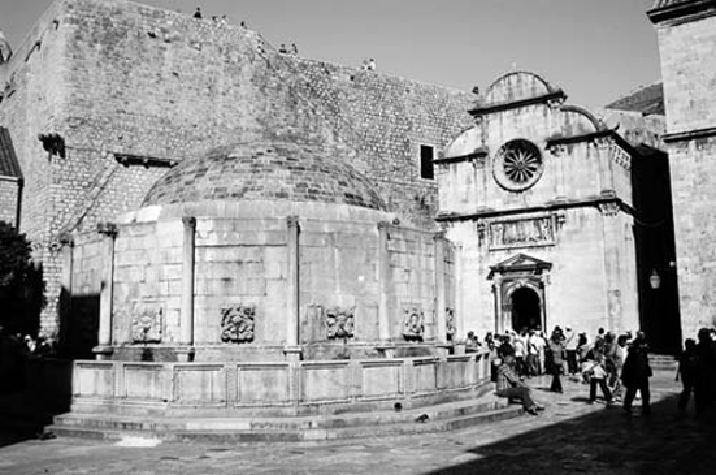Travel Reference
In-Depth Information
Tuckedacrossthesquarefromthechurchisthe
Visia Dubrovnik Multimedia Museum,
showing a badly produced 3-D film about the city's history that isn't worth your 35 minutes
or 75 kn (schedule posted at entry). In the evening, the theater shows first-run 3-D movies.
To the left as you come through the Pile Gate, a steep stairway leads up to the imposing
Min
č
eta Tower.
It's possible to enter here to begin Dubrovnik's best activity, walking
around the top of the wall (described later, under “Sights in Dubrovnik”)—but this walk
ends near a better, less crowded entry point.
Next to the stairway is the small
Church of St. Savior
(Crkva Svetog Spasa). Appreci-
ative locals built this votive church to thank God after Dubrovnik made it through a 1520
earthquake. When the massive 1667 quake destroyed the city, this church was one of the
only buildings left intact—its Renaissance interior stands at odds against the predominantly
Baroque styles in other town churches. And during the recent war, the church survived an-
other close call when a shell exploded on the ground right in front of it (you can still see
faint pockmarks from the shrapnel).
ThebigbuildingontheleftjustbeyondthesmallChurchofSt.Savioristhe
Franciscan
Monastery Museum.
This tourable building has a delightful cloister and one of Europe's
oldest continually operating pharmacies (described later; enter through the gap between the
small church and the door of the big church).

